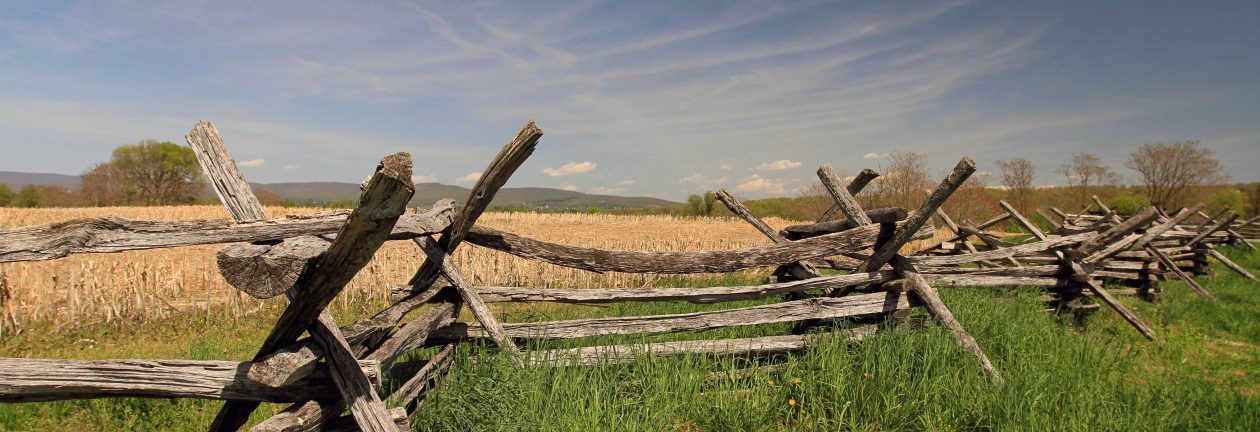Vientiane, Laos
I woke up today feeling well enough to travel (although even if I was still terribly ill, I probably would’ve forced myself to travel anyway), so I got ready and walked downstairs to the reception desk where I then reserved a spot on the “VIP” bus to Vientiane (traveling from Luang Prabang to Vang Vieng via minibus was still a horrendous memory in my mind and I had no desire to repeat that experience, so bus it was to be). I then walked to a convenience store to buy some snacks and drinks, which I took up to my room to consume while I waited for the transportation to arrive and take me to the bus station. At 09:25, I walked downstairs with my bags and turned in the room key; in about ten minutes, a a minibus had arrived to take me and other passengers to the bus station. Once at the station, we loaded our bags in the bus and after a short delay, the bus departed at 10:10. During most of the ride I read from the Book of Ezekiel. We stopped halfway for a short break and then continued on; after the rest stop I talked with the Chinese man sitting in front of me; we discussed vacation time, accents, and stereotypes across the globe, but generally focusing on Anglo-Saxon (within the Anglosphere), Chinese, Korean, and Japanese people; it felt uncomfortable being asked to tell a strange Chinese man about common Chinese stereotypes we have in the United States; so my tongue made sure to proceed most cautiously and diplomatically in regards to the issue. After our conversation, I went back to reading and by 14:00, we were in Vientiane. Lucky for me, the bus stopped near the National Museum, so I knew where I was and the hotel I had booked with was only two blocks away; so I grabbed my bags and walked to it; I checked in, went to my room, and then dropped my bags off. After freshening up, I then exited the hotel to explore the city.
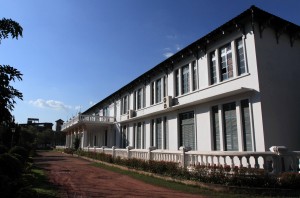
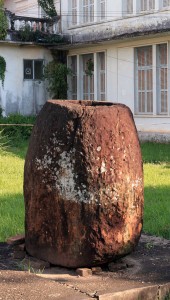
I first walked to the National Museum, paid the entrance fee, and then put my bags in the rundown lockers they had (no cameras allowed). The museum covers the history of Laos from prehistoric times to today; the Stone Age exhibits are similar to most of the ones I’ve seen throughout my life (same old rock tools), so the more interesting portions of the museum for me was the exhibit on the Plain of Jars (a plain with giant stone jars that were used to bury the dead during the Iron Age), the ancient connection between Laos and the Khmer Empire (the Empire’s highway from Angkor ran all the way to Wat Phu in southern Laos), the French Colonial period, and the involvement of the United States in Laotion affairs during the Vietnam War; I had known that the United States was involved in the region before, conducting air operations from Laos, as well as giving aid and support to the anti-communist government, but I had no idea that the United States conducted large scale bombardments on Laos, albeit to stop the North Vietnamese and the Ho Chi Minh Trail (more ordnance was dropped by the U.S. on Laos than it had dropped during all of World War II); also, I was shocked to see so much hate projected toward the United States in this exhibit (due to my ignorance of the history, as well as the fact we supported the anti-communists with materiel, not combat troops, and that we did not directly attack the Pathet Lao (the communist government in Lao), but since Vietnam is Laos’ closest ally, I guess Laos needs to align themselves completely with Vietnam’s view of history). In this anti-American exhibit, just as in Vietnam, the U.S. was always described as “Imperialists”, the governments and leaders the U.S. supported were always described as “puppets” (never mind that the Pathet Lao and Prince Souphanouvong were puppets of the North Vietnamese), and the actions of the U.S. supported governments were blamed on the U.S. regardless of whatever control and knowledge the U.S. had at the time; one display had U.S. weapons in a case with a placard reading, “These weapons were brought by American Imperialists to kill the Lao people.” . . . not exactly telling the whole story for any of the ignorant people who might visit this museum and happen to read that; another placard read, “Knim Phonsena minister of foreign affairs of the coalition government, neutralist, was assassinated by the U.S. Imperialist and its puppets on 1 April 1963.” . . . now, Quinim Pholsena (different spelling) was indeed assassinated on April 01, 1963 by a lance corporal assigned to protect his villa (who confessed he did so because Quinim Pholsena was trying to overthrow the government and was bribing neutralist officers to defect to the Pathet Lao), but to implicate the United States in such a deed without any evidence (it looks like it was a plot by Kong Le, who had previously led a coup d’état in 1960, not the CIA) does not make this museum very objective nor intelligently designed – of course, it is a communist museum, so any facts that don’t fit their version of history will not be admitted (e.g. the Pathet Lao, in collaboration with the Vietnamese Army, committing genocide against the Hmong ethnic minority after the war, killing up to 100,000 Hmong people out of a population of 400,000). This concludes my anti-communist rant for today; if you need any more convincing, just read history (as long as it is not state-sponsored).
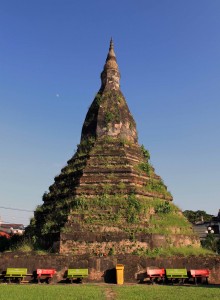
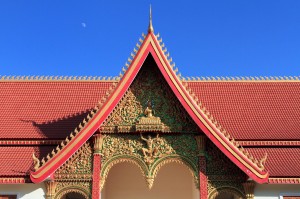
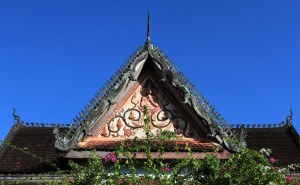
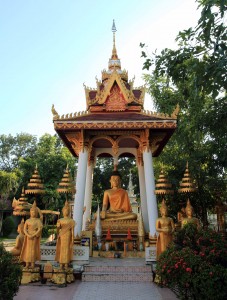
After that propaganda, I left the museum and walked east, passing by That Dam (meaning “Black Stupa”), which is a lone stupa that resides at present in a traffic circle; it is believed that it was once inhabited by a seven-headed Nāga. After visiting the stupa, I walked onward to Wat Si Saket, which was built in 1818 by King Chao Anouvong. I walked around looking at the buildings in the temple compound, but the temple museum had just closed (it was after 16:00); I did talk with a monk for a while who had been at the temple for two years and who had previously been at a temple in Luang Prabang for four years; he told me they do an early morning Alms Ceremony in Vientiane as well, but it is not all on one road and therefore not as impressive. After our conversation had concluded, I walked to the Mekong River to see Thailand on the opposite side.
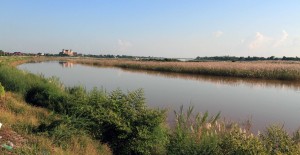
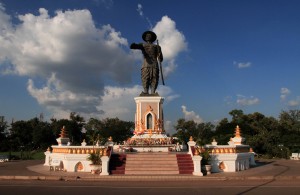
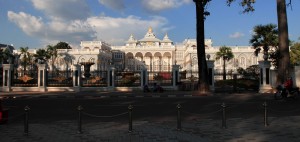
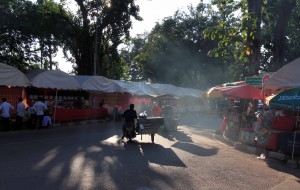

From the Mekong River, I passed by a tall statue of King Chao Anouvong (recently erected in 2010) who is a national hero in Laos and who died a sadistic death that was ordered by King Rama III – he was placed in an iron cage, outside, under the sun, until he died (apparently a year later; with my skin, I would not have lasted a fortnight). I then walked by the Presidential Palace and then through a market area that was filled with smoke from several locals grilling meat. I then walked back to the hotel where I rested for a while before going out to grab dinner. I decided to gorge myself with pizza, so I bought a large (twelve inches) barbeque chicken pizza with a crust stuffed with sausage and cheese (very obscene), as well as three different types of beer; I brought all this food back to my room and ate while watching television; after finishing my meal I laid down in bed in pain; I was fully prepared to die from overeating for this act of gluttony and only wished that there was something worth watching on television so that I might die content, but of course there wasn’t and I didn’t die, I just fell asleep while my stomach continued to process all that I had eaten, burning the oil well past midnight.
